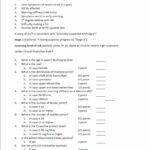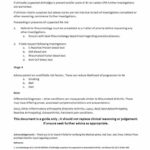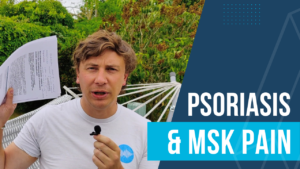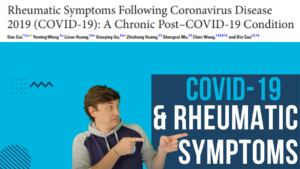Intro
This is the second blog of my Rheumatoid Arthritis series that looks to expand upon the article for PhysioFirst which you can read in full here. It has topped 9000 downloads at the time of writing this blog and I am immensely proud of it as a piece of work, it was however hamstrung by a word limit and primary topic being the joint dysfunction component of RA. Check out the intro to RA here prior to reading this one.
This portion will introduce the 3 stages of RA. When I wrote the original article I was only beginning to become aware of the pre-diagnosis stage and I did not have the knowledge to write confidently about it nor did it fit within the remit of the original article. As such here is an outline of the three stages. These will be expanded on in due course in dedicated blog posts.
As usual feedback is gratefully received as are any materials I might be interested in!
PLEASE REMEMBER – THIS BLOG IS NOT A REPLACEMENT FOR CLINICAL REASONING, IF YOU ARE UNSURE GET ADVICE
The Stages
There is a suggestion in the literature that there are two “stages” to a person’s experience of Rheumatoid Arthritis (van Beers-Tas et al 2015), this is more obviously borne out in the clinical guidelines (Luqmani et al 2006, Luqmani et al 2009). While these are clearly the same medical condition they are associated with different joint dysfunctions and therefore important nuance in the management of the joints from a Physiotherapy perspective.
Vitally there is also a third stage, this is the time prior to diagnosis so technically the individual does not yet have “Rheumatoid Arthritis” but symptoms suggestive of this diagnosis and/or that warrant further investigation.
We could actually discuss other stages such as “at risk” but it feels a bit pedantic for our purposes so we will leave those alone for the time being.
Pre-diagnosis
This very early stage is best defined as “Clinically Suspect Arthralgia”. These patients have symptoms which are suggestive of an inflammatory arthropathy but whom have not yet been investigated or formally diagnosed by a Rheumatologist. To Physiotherapists all patients who present prior to diagnosis will fit this criteria no matter how long their symptoms have persisted as diagnosis of RA is to be made by a Rheumatologist.
We consider these patients at risk of developing RA and this risk can be measured with a couple of different tools. Both of which can be found on the document I wrote to help when you suspect RA if you wish to jump ahead of the next instalment of the blog…
My current advice is anyone who you believe has developed symptoms suggestive of RA needs to be referred to a Rheumatologist without delay. There is a suggestion that treating patients in this phase can induce remission and this is the holy grail of Rheumatology currently.
Early RA
In Early Disease, there are usually no joint erosions or deformities to be contended with, instead acute synovitis causes hot, swollen, stiff and painful joints. This part of the process is critical as successful suppression of the inflammation will protect joints and ultimately function. Medical advances have allowed tighter control of the condition much earlier in the process and this has in turn allowed patients to return to their lives at a much higher functional level much earlier.
Established RA
In Established Disease, many Individuals suffer from varying degrees of joint damage that can result in deformity (Markatseli et al 2011). The classic image of RA is of MCPJs succumbing to ulnar drift due in parts to the chronic synovitis stretching the joint capsule, the erosion of the MCP heads and the stronger ulnar-direction pull of the flexor tendons. This joint damage is not inevitable and as mentioned above earlier control and tighter management of the condition is paramount. Patients in this stage of the process can experience acute flare ups of their arthritis on top of any chronic changes already present.
Thanks for reading, the stages of the condition will be expanded upon soon so if you would like to be kept updated then sign up to the newsletter here for links to new blogs and extra Rheumatology resources that I find on my travels.
Check out other RA related blogs by clicking on Tendons and Pregnancy.
References
Luqmani R, Hennell S, Estrach C, Birrall F, Bosworth A, Davenport G, Fokke C, Goodson N, Jeffreson P, Lamb E, Mohammed R, Oliver S, Stableford Z, Walsh D, Wasbrook C, Webb F. British Society for Rheumatology and British Health Professionals in Rheumatology Guideline for the management of Rheumatoid Arthritis (The first 2 years). Rheumatology 2006:45(9):1167-9
Luqmani R, Hennell S, Estrach C, Basher D, Birrell F, Bosworth A, Burke F, Callaghan C, Candal-Couto J, Fokke C, Goodson N, Homer D, Jackman J, Jeffreson P, Oliver S, Reed M, Sanz L, Stableford Z, Taylor P, Todd N, Warburton L, Washbrook C, Wilkonson M. British Society for Rheumatology and British Health Professionals in Rheumatology Guideline for the management of Rheumatoid Arthritis (after the first 2 years). Rheumatology 2009:48(4):436-9
van Beers-Tas M, Turk S, Schaardenburg D. How does established rheumatoid arthritis develop, and are there possibilities for prevention? Best Practice & Research Clinical Rheumatology 2015:29(4-5):527-42
Markatseli T, Voulgari P, Alamanos Y, Drosos A. Prognostic Factors of Radiological Damage in Rheumatoid Arthritis: A 10-year Retrospective Study. The Journal of Rheumatology 2011:38:44-52




